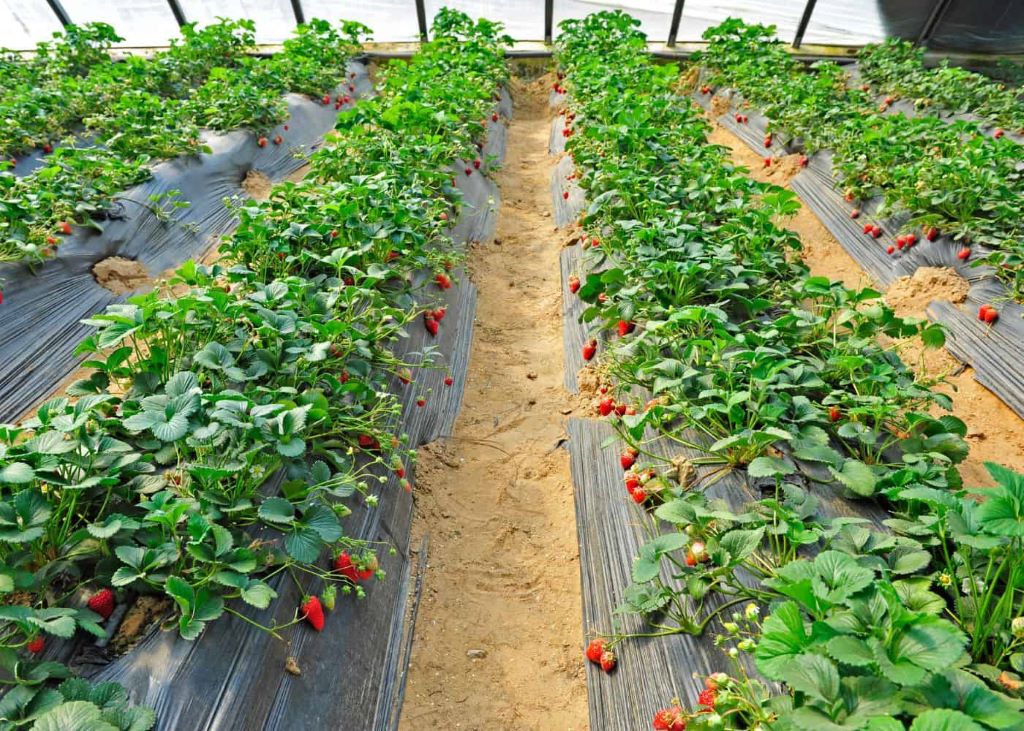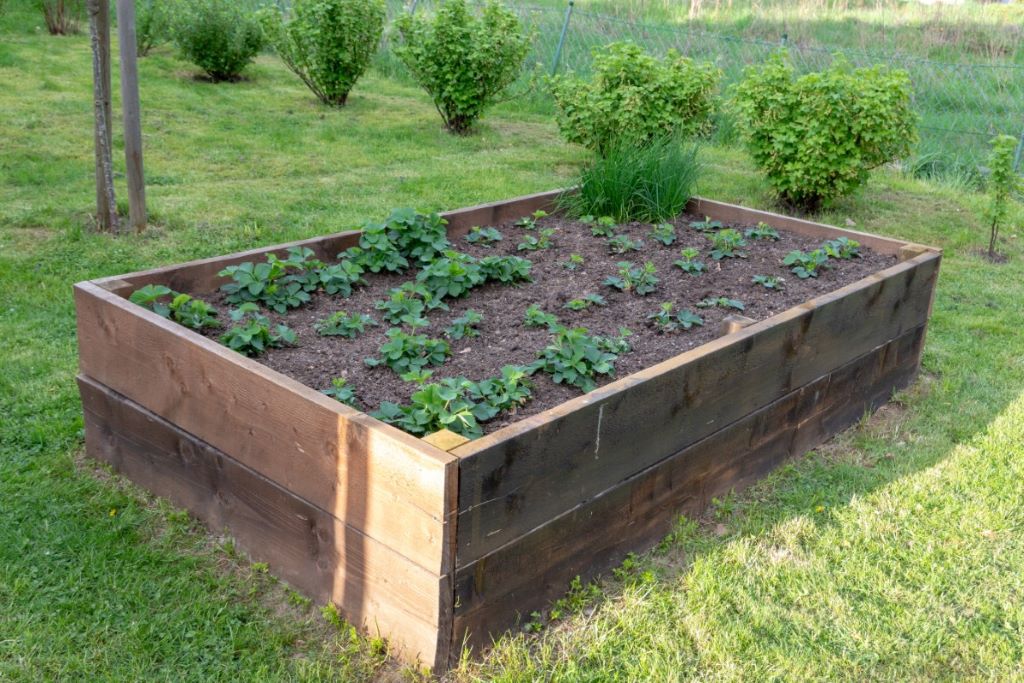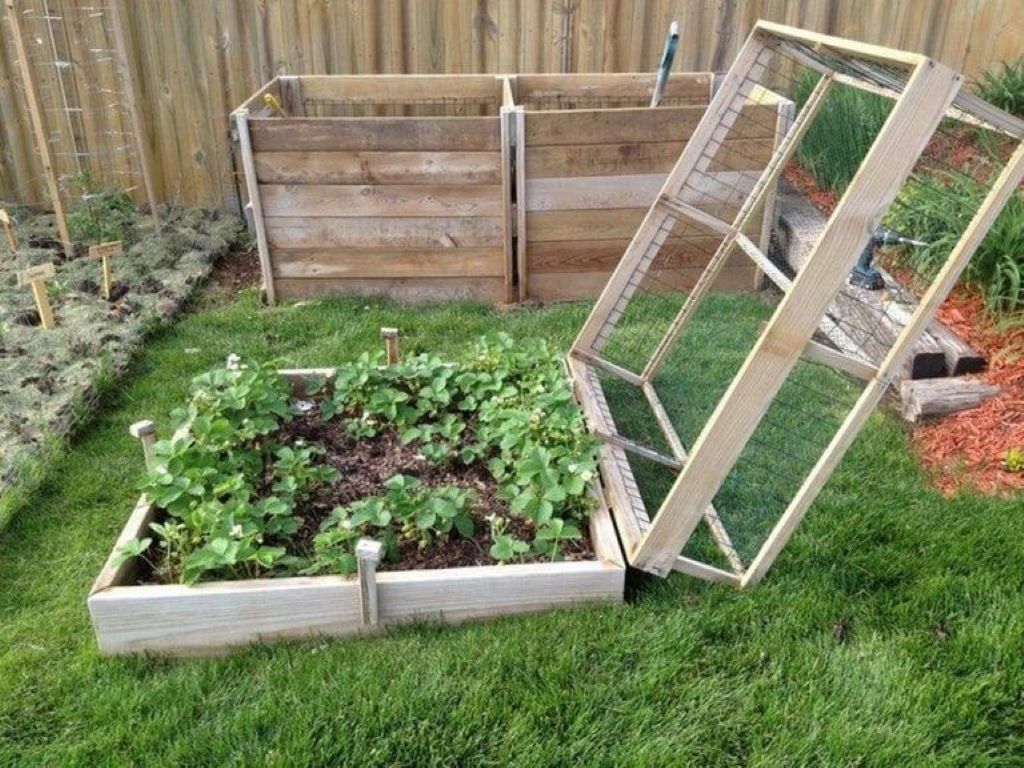
06 Feb Growing Strawberries in Raised Beds: The Expert Guide
Growing strawberries in raised beds is a popular gardening technique that provides optimal growing conditions. In raised beds, strawberries receive excellent drainage and warmer soil temperatures, which promote healthy root development and increase fruit production.
Additionally, raised beds also help to control weeds and prevent diseases, making them an ideal choice for growing strawberries successfully.
Choosing The Right Raised Bed

When growing strawberries in raised beds, it’s important to choose the right raised bed for optimal growth. Consider factors like size, material, and drainage to ensure healthy and productive strawberry plants. The right-raised bed can make a significant difference in the success of your strawberry garden.
Growing strawberries in raised beds is a popular choice for many gardeners. Not only do raised beds offer better drainage and prevent soil erosion, but they also make it easier to control pests and weeds. However, choosing the right raised bed is crucial for the success of your strawberry garden. In this section, we will explore two important factors to consider when selecting a raised bed for your strawberries: the material and size, as well as the location and sunlight.
Material And Size
Selecting the right material for your raised bed is essential for ensuring its durability and longevity. Some common materials include wood, metal, and plastic. Wood, such as cedar or redwood, is a popular choice due to its natural resistance to rot and its aesthetic appeal. Metal beds, made of galvanized steel or aluminum, offer exceptional durability but may heat up quickly under the sun. Plastic beds are lightweight and budget-friendly, but they may not last as long as other materials.
The size of your raised bed is another consideration that greatly impacts the growth and productivity of your strawberry plants. Ideally, the bed should be wide enough to accommodate the spread of the plant’s roots and allow for proper spacing between each plant. A minimum width of 2 feet is recommended, as it allows for good airflow and healthy root development. Additionally, the length of the bed should be determined based on the available space in your garden.
Location And Sunlight
When deciding on the location for your raised bed, it’s crucial to choose a spot that receives ample sunlight. Strawberries thrive in full sunlight, so aim for at least six to eight hours of direct sunlight each day. Avoid placing your raised bed in areas with excessive shade, as it can result in poor fruiting and weak plant growth.
Furthermore, consider the proximity to water sources. Strawberries require consistent moisture, so placing your raised bed near a water source or installing a drip irrigation system is highly recommended. This will ensure that your plants receive adequate water without the risk of overwatering or waterlogged soil.
In conclusion, selecting the right raised bed for your strawberry garden is a critical decision that requires careful attention to the material and size of the bed, as well as choosing an appropriate location. Alices Wonderland Nursery recommends ensuring that the chosen spot receives ample sunlight and is easily accessible for regular watering. These factors are essential for creating an optimal environment where your strawberries can thrive and produce an abundant harvest. By considering the specific needs of strawberry plants and adjusting your gardening approach accordingly, you can enjoy the rewards of a bountiful strawberry garden in a raised bed setting.
Preparing The Soil
One of the most important steps in growing strawberries in raised beds is preparing the soil. Proper preparation ensures that your strawberry plants have the necessary nutrients for healthy growth and abundant fruit production. In this article, we will discuss the soil composition and how to amend the soil to create the ideal conditions for your strawberry plants.
Soil Composition
Before planting strawberries in raised beds, it is essential to understand the ideal soil composition. Strawberries prefer well-draining soil with a pH level between 5.5 and 6.5. This slightly acidic pH range allows the plants to absorb the necessary nutrients effectively. The soil should also be rich in organic matter, ensuring proper water retention and nutrient availability.
When choosing a site for your raised bed, consider the quality of the existing soil. If the soil in your yard is heavy clay or compacted, it may not provide the optimal conditions for growing strawberries. Raised beds allow you to have more control over the soil composition and drainage, ensuring the best growth for your plants.
Amending The Soil
To create the ideal soil for strawberries in raised beds, you may need to amend the existing soil. Adding organic matter such as compost or well-rotted manure can improve the soil’s texture, drainage, and nutrient content. Incorporate it into the top few inches of the soil, ensuring an even distribution throughout the bed.
Amending the soil with organic matter also helps improve its ability to retain water, preventing drought stress for your strawberry plants. Organic matter acts as a sponge, holding moisture for the plants’ roots while allowing excess water to drain away. This balanced moisture level is crucial to keep your strawberries healthy and productive.
In addition to organic matter, when growing strawberries in pots, you may also need to adjust the pH level of your soil. If your soil is too acidic, you can raise the pH by adding lime. Conversely, if it is too alkaline, sulfur can be added to lower the pH. It is essential to test the soil’s pH using a soil testing kit before making any adjustments. This ensures you are providing the optimal conditions for your strawberry plants’ growth.
Once the soil in your raised bed is properly amended, it is ready for planting strawberries. By preparing the soil correctly, you give your strawberry plants the best start possible, resulting in healthy growth and a bountiful harvest.
Selecting Strawberry Varieties
When it comes to selecting the right strawberry varieties for your raised beds, it’s important to consider factors such as the type of strawberry, regional suitability, and your specific growing conditions. Choosing the appropriate variety can significantly impact your harvest and overall success.
June-bearing Vs. Everbearing
June-bearing strawberries produce one large crop in late spring or early summer. These varieties are well-suited for areas with distinct seasons and are ideal for preserving. On the other hand, everbearing strawberries produce multiple smaller harvests throughout the growing season, giving you a more extended period of availability. Consider your preferences and the purpose of your strawberry harvest when selecting between the two types.
Regional Suitability
Consider the climate and weather patterns in your specific region when choosing strawberry varieties. Some strawberries thrive in cooler climates, while others are better suited for warmer regions. Take into account your local climate and the average temperature during the growing season to select varieties that will thrive in your area.
Planting And Maintenance
When it comes to planting and maintaining strawberries in raised beds, there are a few important factors to consider. In this section, we will cover spacing and depth, watering, and fertilizing, to ensure your strawberries thrive in their raised bed environment.
Spacing And Depth
Strawberries require proper spacing and depth to grow effectively in raised beds. When planting strawberries, it’s important to give each plant enough room to spread out and receive sufficient sunlight. Space the plants about 12-18 inches apart, allowing them ample room to grow and breathe.
As for depth, ensure that the crowns of the plants are level with the ground. This means that the soil should cover the roots, but not the crown, as covering the crown can cause rot and hinder growth. The exact depth will depend on the size and variety of your strawberry plants, but a general rule of thumb is to plant them at a depth of about 1 inch.
Watering And Fertilizing
Proper watering and fertilizing are crucial for the successful growth of strawberries in raised beds. Strawberries require consistent moisture, but it’s important not to overwater them, as this can lead to root rot.
When watering strawberries in raised beds, ensure that the soil is evenly moist, but not waterlogged. As a general guideline, aim to provide around 1 inch of water per week, either through rainfall or manual watering. Strawberries also benefit from a layer of mulch, which helps retain moisture and regulate soil temperature.
In terms of fertilizing, strawberries should be fed with a balanced fertilizer that is specifically formulated for fruit-bearing plants. Apply the fertilizer according to the manufacturer’s instructions, typically every 3-4 weeks during the growing season. This will provide the necessary nutrients for healthy growth and abundant fruit production.
Pest And Disease Management

Growing strawberries in raised beds can be a rewarding experience. However, just like any other plant, strawberries are susceptible to pests and diseases. Proper pest and disease management is crucial to ensure a bountiful harvest. In this article, we will explore some common pests that attack strawberries and discuss effective disease prevention strategies.
Common Pests
Strawberries in raised beds can attract a variety of pests. Here are some of the most common ones:
- Aphids: These small, soft-bodied insects suck the sap from strawberry plants, causing yellowing leaves and stunted growth.
- Slugs and snails: These slimy creatures feast on both leaves and fruits, leaving behind telltale slime trails and chewed-up foliage.
- Spider mites: These tiny arachnids spin webs and feed on the undersides of leaves, causing yellowing and stippling.
- Whiteflies: These tiny, winged insects suck sap from strawberry plants and transmit viral diseases.
To prevent these pests from wreaking havoc on your strawberry plants, it is important to implement integrated pest management strategies. This involves a combination of cultural, physical, and biological control methods.
Disease Prevention
Preventing diseases is essential to maintaining the health of your strawberry plants. Here are some effective disease prevention measures:
- Plant disease-resistant varieties: Before planting, choose strawberry varieties that have natural resistance to common diseases in your area. This can greatly reduce the risk of infections.
- Practice crop rotation: Avoid planting strawberries in the same raised bed for consecutive years to minimize the buildup of soil-borne diseases.
- Ensure good air circulation: Proper spacing between plants and removing weeds regularly promotes airflow, which helps prevent fungal diseases.
- Mulch with straw: Mulching with straw not only retains soil moisture and suppresses weeds but also acts as a barrier, preventing disease-causing pathogens from splashing onto the plants.
- Water at the base: Watering at the base of the plants instead of overhead minimizes the spread of foliar diseases.
- Remove infected plants: If you notice any signs of disease, promptly remove and dispose of infected plants to prevent the further spread of pathogens.
By following these disease prevention strategies, you can significantly reduce the chances of your strawberry plants falling victim to common diseases.
Frequently Asked Questions On Growing Strawberries In Raised Beds
How Do You Grow Strawberries In Raised Beds?
To grow strawberries in raised beds, choose a sunny location, prepare the soil with compost, and space plants properly. Provide regular watering and mulching to retain moisture. Remove runners to encourage fruiting, and protect plants from pests and diseases. Harvest ripe strawberries regularly for optimal yield.
Can Strawberries Be Grown In Containers?
Yes, strawberries can be successfully grown in containers. Use a container with good drainage, fill with potting mix, and plant strawberries at the appropriate spacing. Ensure the container receives at least 6 hours of sunlight daily and water regularly to keep the soil moist.
Container-grown strawberries can be placed on patios, balconies, or even indoors.
How Long Does It Take For Strawberries To Grow In Raised Beds?
Upon planting, strawberries grown in raised beds typically take 4-6 weeks to bear fruit. However, the exact time may vary depending on various factors such as the strawberry variety, climate, and growing conditions. Regular care, including proper watering, weeding, and fertilizing, can help ensure healthy plant growth and abundant fruiting.
Conclusion
Growing strawberries in raised beds offers numerous benefits for gardeners. Strawberries, one of the most common red fruits, thrive exceptionally well in raised beds; by providing good drainage and reducing weed competition, these gardening structures can significantly increase the yield and quality of your strawberries, ensuring a bountiful harvest for years to come with proper care and maintenance.


Sorry, the comment form is closed at this time.